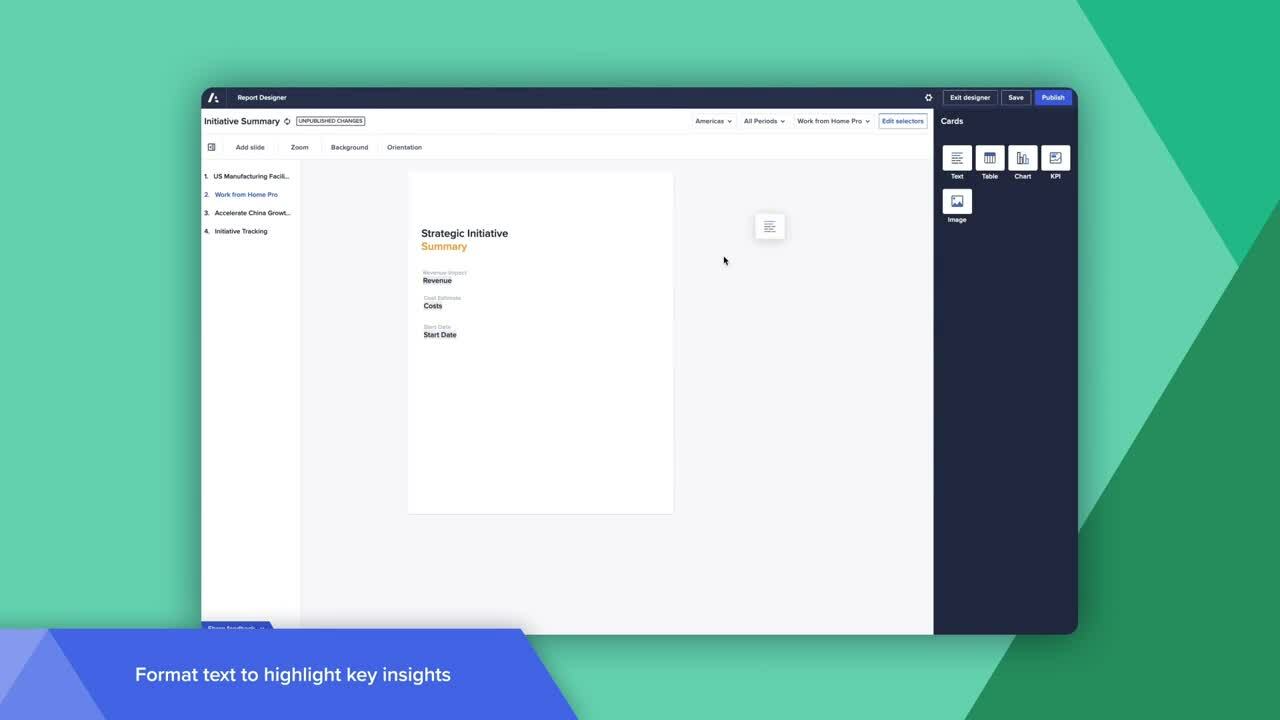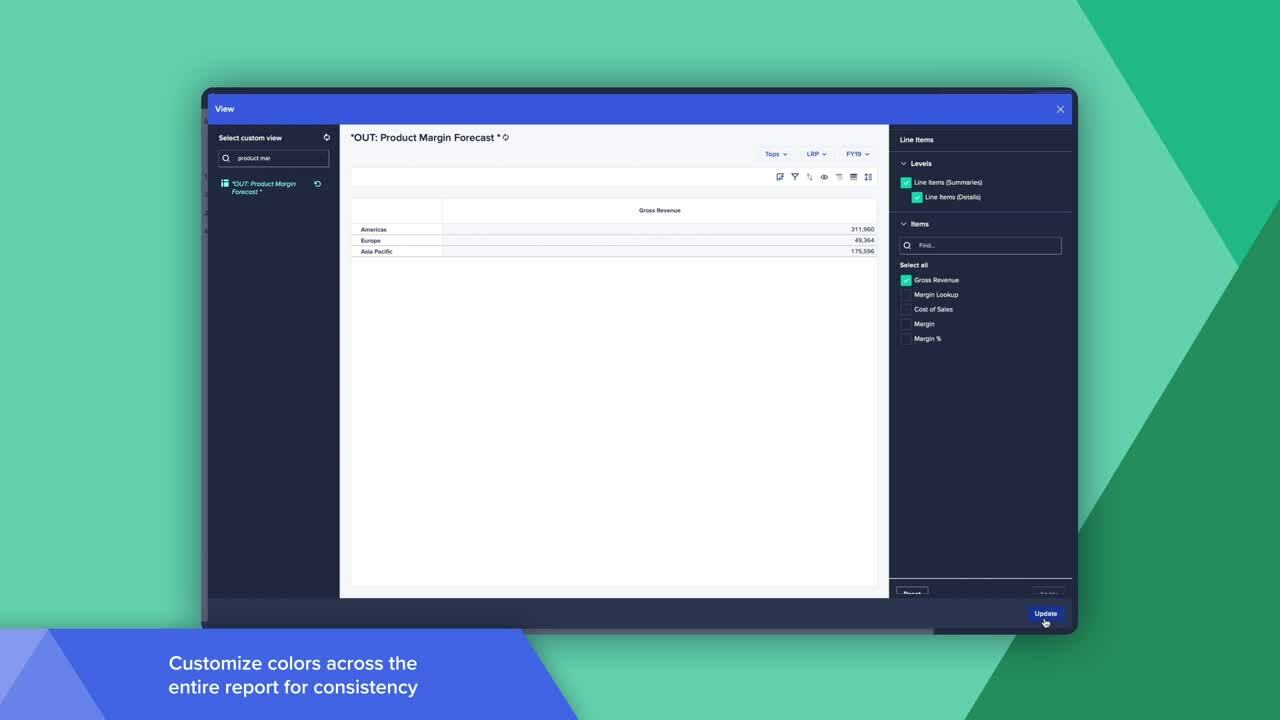Flash reports can mean different things inside an organization. Short and succinct, they give business leaders a snapshot of financial and operational affairs for a business unit, market segment, or product line within a given timeframe.
The very definition of a glow up, these sometimes-forgotten, rarely discussed financial reports gained affection from growth-minded CFOs during the pandemic, and are now often used to deliver daily or weekly insights throughout a turbulent fiscal year.
But flash reports are neither new nor going away anytime soon. Done right, flash reports give CFOs and other leaders critical business insight and can help bridge gaps between financial and operational decision-making.
Evaluating every opportunity with a growth mindset
Helping the company make quick, smart decisions means looking at every business opportunity with the right mindset. All growth-minded CFOs share commonalities, and one of those is this: Although it might not be about finance, it’s always about finance.
Astute and implacable, growth-minded CFOs base every decision on whether or not it will accelerate revenue growth. Or if it lets them expand margins without raising prices. And how it can help them optimize assets. Also, where it will minimize, or at least mitigate, risks.
In other words, growth-minded CFOs align everything they do with at least one—often multiple—growth driver. Being able to do this, and do this well, requires two unmistakable factors: time and data.
Unfortunately, this is a story as old as time and finance folks already know the ending. Quick decision-making and corrective actions are necessities, and time is a luxury not always afforded, especially in highly volatile, competitive industries.
Not to mention that limited access to and visibility into operational data continue to cause heartburn for so many finance leaders. CFOs need to make fast, smart decisions, but making moves within, say, 24 hours, tends to hinge on an unappetizing combo platter of fragmented data, gut instincts, and sheer luck.
Bottom line? A single view of the business does not a good decision make.
The reporting edge inside your enterprise planning tool
So, how can CFOs get the kind of visibility they need to make quick, well-rounded decisions? Equally important, how can their teams equip other parts of the business with similar intel?
The answer to both questions resides inside most enterprise planning and reporting tools. Well-designed flash reports can provide finance and other business leaders with a timely, accurate, and real-time view of the business to help form their decisions.
First, flash reports help CFOs produce plans that are not only quick to build, but pull real-time, trustworthy data from other areas of the business. This not only helps them make quick, informed decisions and course-correct sooner, but also justify those decisions to the board and key stakeholders.
As a means of agile decision-making, growth-minded CFOs also commonly use flash reports to apprise leadership when (and why) to pivot certain strategies and where to reallocate attention.
Second, the finance team can use flash reports to give other business leaders fast, focused insights to make finance-led decisions. Often prepared by a financial analyst, flash reports serve as optimal answers to executive or leadership requests for the “state of the state” in any given area of the business.
For example, say Sales just landed a big customer expansion deal. Leadership needs to understand what this expansion cost them. In a situation like this, running a flash report to pull the customer’s profitability or P&L statement is a quick, easy way to get stakeholders the information they need to stay on top of relevant business activities.
Unreliable flash reports? Check for one of these common pitfalls
Flash reports have been around for ages. The need for speed and agility in producing quick views of the business is nothing new. But what is new—or at least, newly acknowledged—are brutal organizational gaps exposed by the pandemic over the past year.
Despite all best efforts and good intentions, it’s never been more apparent to business leaders just how much information isn’t actually readily available to them. After all, how valuable can flash reports be if the right teams don’t have access to the right data? Or when operational data needs to be stitched together from multiple tools? Or if the delivery mechanism is clunky and not user friendly?
Every CFO knows that flash reports are only as good as the tools they’re built from—tools that give the right teams the right access to the right data at the right moment in time. When it comes to reporting, in any format and at any level, consider whether your organization has the following:
- A unified source of truth for reporting. The most common cause of inconsistent, inaccurate data comes from using multiple sources for financial and non-financial data. Whenever possible, centralize planning and reporting data within a single tool.
- Easy visibility into data across the enterprise. Pinpointing operational trends and financial drivers with limited data sets turns reporting trends and performance into a tireless chore. Visibility into and access to operational data across business units and departments is mission-critical to meaningful insight and action.
- Ways to collaborate in reports and plans easily. In inefficient, time-consuming processes, complexity often outweighs value. Look for features that give users fast, easy ways to comment, share, and tag colleagues for real-time reviews and responsive feedback.
- An efficient method for distributing reports to stakeholders. Just because you build it doesn’t mean they’ll come. For frequent, reliable reporting, prioritize automation and scheduling capabilities for smooth, hassle-free report delivery.
Three tips for building trustworthy (and useful) flash reports
Stuck in an endless cycle of custom report creation? It doesn’t have to be that way. Consider the following tips to build quick, digestible flash reports that clearly highlight the data your stakeholders care about.

Tip #1: If it takes more than an hour, you’re doing it wrong
Reporting at the speed of planning can’t happen when you’re always recreating the wheel. Quickly generate and refresh new or saved reports with real-time data and updated information.
Tip #2: Visuals make a nice touch, but keep focus on the story
Decidedly less glamorous than board decks, flash reports serve an equally noble purpose. Use charts and graphs to call attention to key KPIs while emphasizing main takeaways, emerging trends, and financial narratives with dynamic text cards and context capabilities.


Tip #3: Keep reports consistent but don’t be afraid to customize!
Standardized ≠ boring. Eliminate inconsistency and complexity through standardized templates and formatting while also taking advantage of a diverse range of backgrounds, charts, and table colors to better differentiate data views for different stakeholders.
What does the future of agile, real-time reporting and analysis look like? Learn more about Anaplan’s newly launched Management Reporting features and its vision to bring financial and operational data to life in the Newsroom article below.



